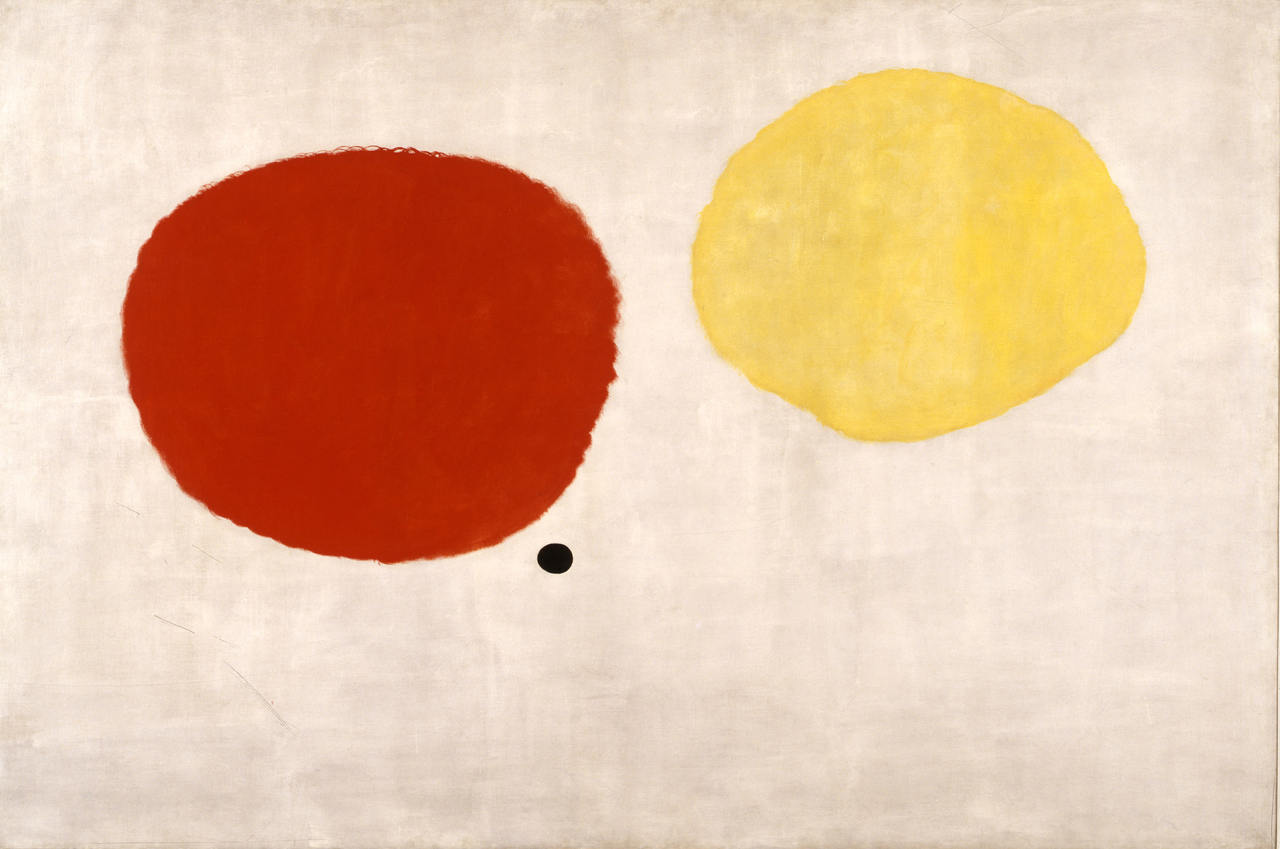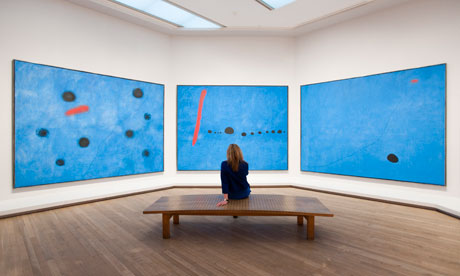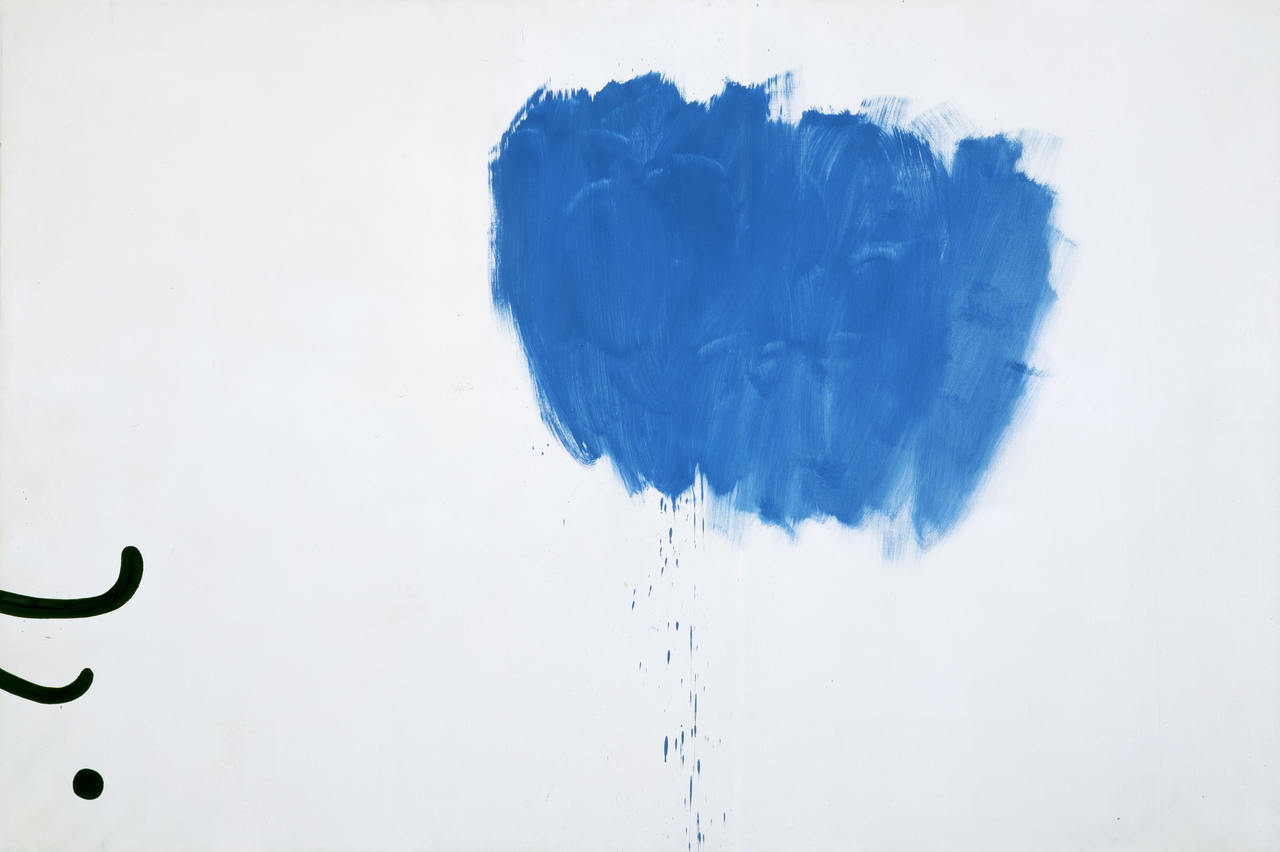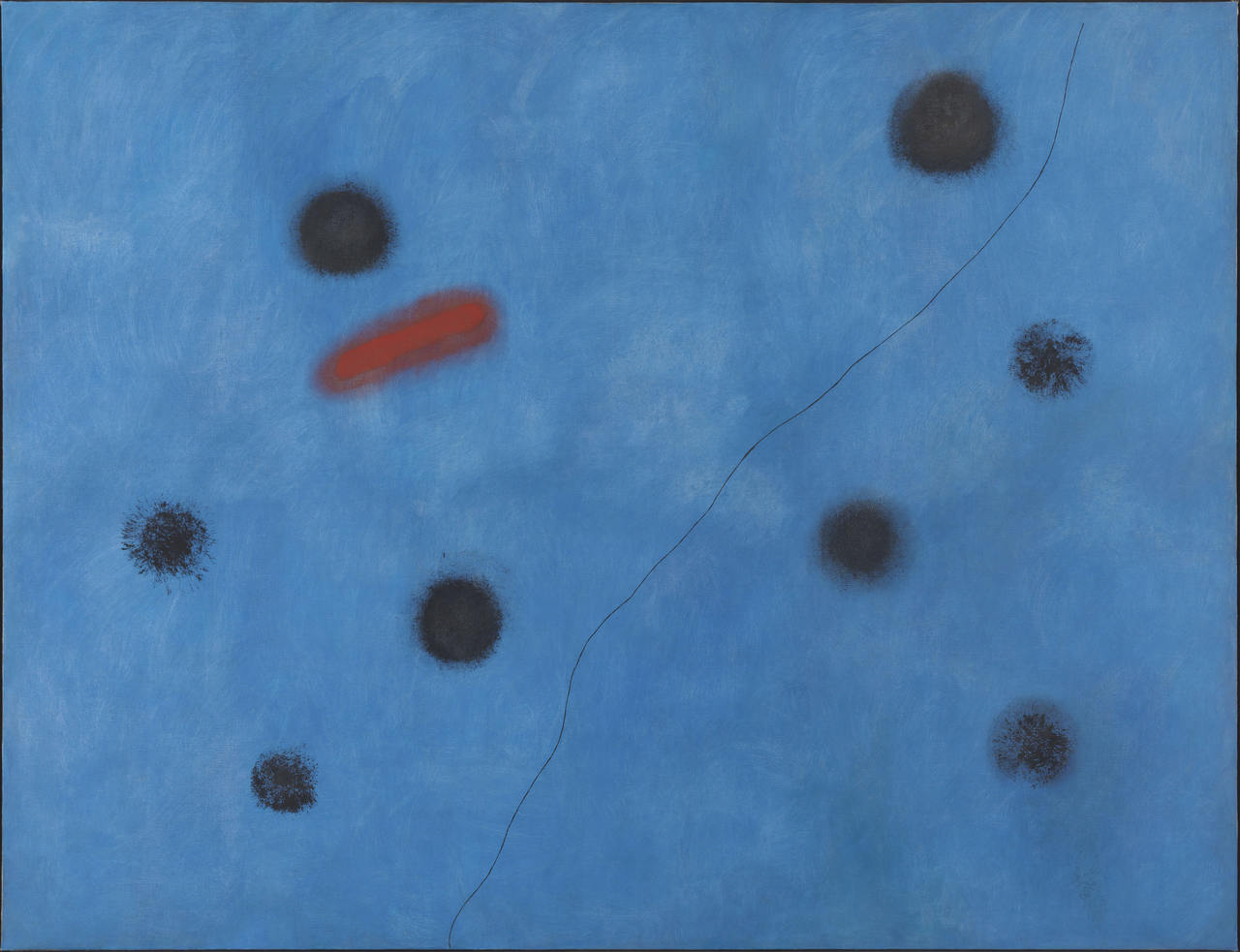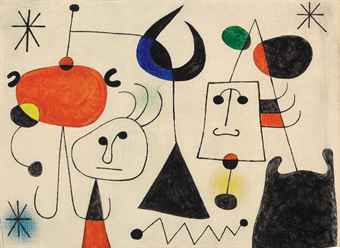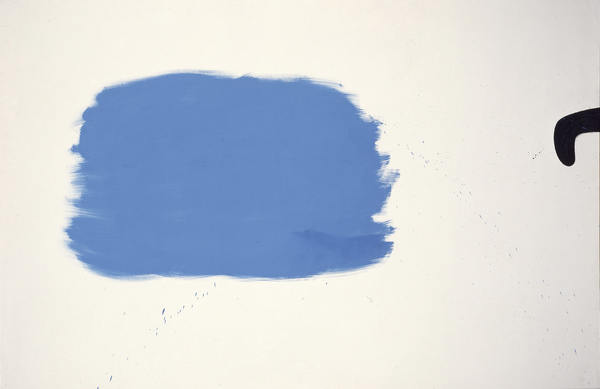Joan
Miró (1893 – 1983) once famously declared that he wanted to “assassinate” painting.
Today he is widely regarded as one of the greatest artists of the 20 th century. From February 26 through June 12, 2016 Schirn
Kunsthalle Frankfurt presents an until now little discussed aspect of his oeuvre
in a focused solo exhibition: Miró ’s preference for large - scale formats and
his fascination with the wall.
In
his painterly practice, the wall was the starting point – both as an object to
be depicted and as an inspiration for the textural quality of his w orks. Miró distanced
himself from the simple reproduction of reality and equated the picture plane with
the wall. He explored the structure of its surface and aimed to dissolve the
boundaries of the image space. His particular approach with the wall explains
the care with which he selected and prepared the materials and the grounds of
his pictures at every stage of his career . Miró’s paintings hereby gained the
haptic qualities and textures of wall surfaces. The artist used whitewashed
canvas, coarse burlap, Masonite (hardboard), sandpaper and tarpaper in order to
create unique visual worlds of outstanding materiality .
The
exhibition at the Schirn covers over half a century of Miró’s oeuvre, beginning
with his emblematic painting
The Farm / La Ferme (1921/22 ),
continuing
with his iconic dream paintings of the 1920s, his key work
Painting (The Magic of Colour) / Peinture (La Magie de la couleur)
Painting (The Magic of Colour) / Peinture (La Magie de la couleur)
from
1930, his works and frieze formats painted on unconventional grounds in t he 1940s
and 1950s and ending with the artist’s late works , such as the monumental
triptych
Blue I – III / Bleu I – III (1961)
and
the extraordinary Painting I – III / Peinture
I – III ( July 27, 1973).
The
Schirn exhibition brings together around 50 works from imp ortant museums and
public collections across the world, including the Solomon R. Guggenheim
Museum, New York, the National Gallery of Art, Washington D.C., the Museo Reina
Sofía, Madrid, and the Centre Pompidou, Paris, as well as important private
collections, and aims to present a new approach to Miró’s art.
Max
Hollein, director of Schirn Kunsthalle Frankfurt, illustrated the focus of the
exhibition as follows: “The importance Miró accorded the wall in his painterly
oeuvre is fascinating. His works are powerful, monumental and bear witness t o
an incredibly original approach – especially when viewed in the flesh. Miró
fans and those less familiar with his work will be able to discover unexpected art
works in the exhibition. The Schirn’s aim is to provide insights into less well
- known work complexes or themes within the oeuvre of the established master
artists of art history: the present exhibition highlights crucial aspects that
provide new aspects to looking at Miró’s work.”
Curator
Simonetta Fraquelli said of the artist: “ Miró viewed both reality and its
representation in art in material terms. For him, the wall was thus not merely
an object to be depicted: its materiality also dictated the intensely physical,
tactile quality of his images. In this way, the matter of reality corresponded
to the matter of his paintings. This move away from a straightforward
reproduction of reality to the equation of the picture plane with a wall in formed
his work from the outset.
TOUR
OF THE EXHIBITION
The
exhibition starts with the early masterpiece The Farm / La Ferme (1921/22), (above) in
which the artist depicts the brick wall of the stable alongside the goings - on
on the farm of the Miró family in Montroig, South of Barcelona meticulously,
in great detail and in an extraordinarily poetic way. The wall with all of its
“blemishes”, such as blades of grass, germ buds, insects, stains or cracks in
the grout are rendered in minute detail. The fact that Miró’s visual language
references modest, unadorn ed walls is mad e clear by the juxtaposition of this
piece with the three - part large format work
Painting / Peinture of 1973/74. Radical and monochrome, these paintings also provide a counterpoint to Miró’s works in bright colors.
The exhibition pairs works from the early and late phases of his career, bringing together works that use similar painting grounds or everyday materials of the same kind. In the mid - 1920s, Miró dripped and splashed paint onto blue ground ing in order to create the impression of old, weather - worn walls.
This process resulted in paintings reminiscent of graffiti, such as
Painting Poem ( Stars in the Sexes of Snails ) / Peinture - Poème (Étoiles en des sexes d’escargot) (1925)
or Spanish Flag / Drapeau espangnol (1925).
Miró often worked in series, and certain formats recurred throughout his entire oeuvre. Along with blue painting grounds, brown ones form the second largest group of paintings.
The exhibition includes the exceptional paintings Blue / Bleu (1925) and some of his widely acclaimed dream paintings, such as
Painting (Figures: The Fratellini Brothers ) / Peinture (Personnages: Les frères Fratellini) made in 1927.
The bright blue color used in these works is captivating and characterizes many of his canvases well into the 1960s, including the visually stunning tryptic
Blue I – III / Bleu I - III (1961), over three meters in width,
and the frieze - like Painting (For David Fernández Miró) / Peinture (Per a David Fernández Miró) ( November 28, 1964).
The color blue in these and other works has often been read as alluding to the sky. Yet the artist himself associated blue with memories of the walls of farm houses in his native Catalonia, which h ad been splashed with blue vitriol wash .
One of the key works in the presentation at the Schirn is the piece
Painting (The Magic of Colour) / Peinture (La Magie de la couleur) from 1930.
By employing a sparse, persuasive materiality and reduced formal language it references the wall per se like no other painting. Two large patches in red and yellow, surrounded by an empty space made up of white painterly ground ing , exemplify Miró’s effort to overcome traditional approaches to composing images. This painting really unlocks the meaning of his famous declaration of wanting to “ assassinate ” painting, as h e radically questioned previously accepted, basic rules of technique and composition in art. Here, Miró forwent all allusion and poetic context. Again, the white paint references the whitewashed farm houses of his youth.
In his attempt at overcoming traditional painting, Miró employed unconventional painting grounds as early as the late 1920s and 1930s, including untreated canvas, hardboard or sandpaper and materials such as burlap or tarpaper. This resulted in works with a special texture and materiality, for example the tarpaper collage
Head of Georges Auric / Tête de Georges Auric (1929),
the Signs and Figurations / Signes et figurations drawn on sandpaper in the years 1935 - 6 or the Paintings / Peintures on Masonite of 1936 .
The exhibition further showcases works that reflect Miró’s thoughts on the advent of the Spanish Civil War, the world - political situation in the late 1930s and the events preceding the Second World War.
The paintings executed in a bold style, in part on coarse burlap, such as
Figures and Birds in the Night / Personnages et oiseaux dans la nuit ( December 1939), were the ones that came the closest to paintings made on bare walls.
In 1937, Miró worked alongside Picasso for the pavilion of the Spanish Republic at the Paris World Fair. He here created his first mural in public space, which was regarded as being a strong political statement. His interest in landscape formats reminiscent of large friezes is to be discerned among others in Women and Birds / Femmes et oiseaux (1945).
After World War II, Miró increasingly focused on paintings in monumental formats. Included in the exhibition at the Schirn is the piece Painting / Peinture (1953) , which is almost four meters wide. It speaks of Miró’s enthusiasm for monumental murals and ceramics and is characterized by an exceptional freedom in terms of drawing, an energetic application of paint, strong contrasts and a strong sculptural quality.
The painting
The Awakening of Madame Bou - Bou at Dawn / Le Réveil de Madame Bou - Bou à l’aube (begun in 1939, completed April 29, 1960 ) , with its fine white lines seems almost as though painted onto a weather - worn wall and points to the later, ephemeral drawings made of the walls of his studio “Son Boter” in Palma de Mallorca.
Painting / Peinture of 1973/74. Radical and monochrome, these paintings also provide a counterpoint to Miró’s works in bright colors.
The exhibition pairs works from the early and late phases of his career, bringing together works that use similar painting grounds or everyday materials of the same kind. In the mid - 1920s, Miró dripped and splashed paint onto blue ground ing in order to create the impression of old, weather - worn walls.
This process resulted in paintings reminiscent of graffiti, such as
Painting Poem ( Stars in the Sexes of Snails ) / Peinture - Poème (Étoiles en des sexes d’escargot) (1925)
or Spanish Flag / Drapeau espangnol (1925).
Miró often worked in series, and certain formats recurred throughout his entire oeuvre. Along with blue painting grounds, brown ones form the second largest group of paintings.
The exhibition includes the exceptional paintings Blue / Bleu (1925) and some of his widely acclaimed dream paintings, such as
Painting (Figures: The Fratellini Brothers ) / Peinture (Personnages: Les frères Fratellini) made in 1927.
The bright blue color used in these works is captivating and characterizes many of his canvases well into the 1960s, including the visually stunning tryptic
Blue I – III / Bleu I - III (1961), over three meters in width,
and the frieze - like Painting (For David Fernández Miró) / Peinture (Per a David Fernández Miró) ( November 28, 1964).
The color blue in these and other works has often been read as alluding to the sky. Yet the artist himself associated blue with memories of the walls of farm houses in his native Catalonia, which h ad been splashed with blue vitriol wash .
One of the key works in the presentation at the Schirn is the piece
Painting (The Magic of Colour) / Peinture (La Magie de la couleur) from 1930.
By employing a sparse, persuasive materiality and reduced formal language it references the wall per se like no other painting. Two large patches in red and yellow, surrounded by an empty space made up of white painterly ground ing , exemplify Miró’s effort to overcome traditional approaches to composing images. This painting really unlocks the meaning of his famous declaration of wanting to “ assassinate ” painting, as h e radically questioned previously accepted, basic rules of technique and composition in art. Here, Miró forwent all allusion and poetic context. Again, the white paint references the whitewashed farm houses of his youth.
In his attempt at overcoming traditional painting, Miró employed unconventional painting grounds as early as the late 1920s and 1930s, including untreated canvas, hardboard or sandpaper and materials such as burlap or tarpaper. This resulted in works with a special texture and materiality, for example the tarpaper collage
Head of Georges Auric / Tête de Georges Auric (1929),
the Signs and Figurations / Signes et figurations drawn on sandpaper in the years 1935 - 6 or the Paintings / Peintures on Masonite of 1936 .
The exhibition further showcases works that reflect Miró’s thoughts on the advent of the Spanish Civil War, the world - political situation in the late 1930s and the events preceding the Second World War.
The paintings executed in a bold style, in part on coarse burlap, such as
Figures and Birds in the Night / Personnages et oiseaux dans la nuit ( December 1939), were the ones that came the closest to paintings made on bare walls.
In 1937, Miró worked alongside Picasso for the pavilion of the Spanish Republic at the Paris World Fair. He here created his first mural in public space, which was regarded as being a strong political statement. His interest in landscape formats reminiscent of large friezes is to be discerned among others in Women and Birds / Femmes et oiseaux (1945).
After World War II, Miró increasingly focused on paintings in monumental formats. Included in the exhibition at the Schirn is the piece Painting / Peinture (1953) , which is almost four meters wide. It speaks of Miró’s enthusiasm for monumental murals and ceramics and is characterized by an exceptional freedom in terms of drawing, an energetic application of paint, strong contrasts and a strong sculptural quality.
The painting
The Awakening of Madame Bou - Bou at Dawn / Le Réveil de Madame Bou - Bou à l’aube (begun in 1939, completed April 29, 1960 ) , with its fine white lines seems almost as though painted onto a weather - worn wall and points to the later, ephemeral drawings made of the walls of his studio “Son Boter” in Palma de Mallorca.
The works Painting I - III / Peinture I - III , conceived as a triptych in 1973, occupy a special place in the exhibition. The engrossing blue patches illustrate Miró’s unshakable belief in the inspirational power of bare walls, consolidating his thoughts on murals, which were formative for Abstract Expressionism, and bear witness to his boundless creative vitality even in old age.
It was of vital importance to Miró that his work be publicly accessible. In accordance with his wishes the exhibition therefore ends with two extraordinary designs for ceramic murals for the public sphere, shown in original scale. He conceived the Wall of the Moon (Cartoon for the UNESCO Mural) / Mur de la lune (Marquette Mur de l’UNESCO) and the Wall of the Sun (Cartoon for the UNESCO Mural) / Mur du soleil (Ma rquette Mur de l’UNESCO) (both around 1957 ) for the UNESCO headquarters in Paris. The preparatory work for these reveal his extensive examination of the possibilities available in creating large format ceramics. At the same time, they are great examples of Miró’s artistic reaction to incidental drawings and the “blemishes ” found on bare walls – as well as his working process, which could begin with a small sketch or doodle and lead to a painting of monumental size.
An exhibition in cooperation with Kunstha us Zürich.

